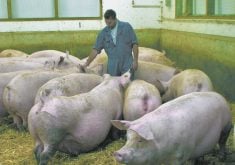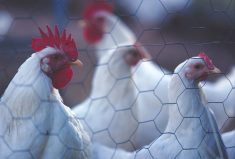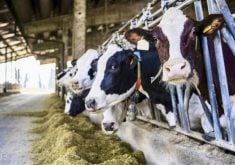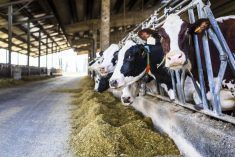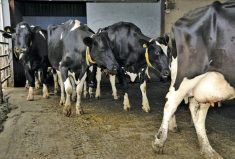At the Lehoux dairy farm at Saint-Elizéar, Que., the family once had a market for bulls sold to dairy genetics companies.
They still sell heifers and cows to other farmers, but the bull market has dried up, as it has for most dairy farmers across the country.
Why this happened: The market has changed rapidly and significantly since the arrival of genomic testing, in vitro fertilization (IVF) and sexed semen. The triumvirate of technologies has altered the way some dairy farmers have defined themselves for generations, changed the markets for cows and heifers and ushered in a rocket-fuelled era of genetic improvement for dairy animals.
Read Also
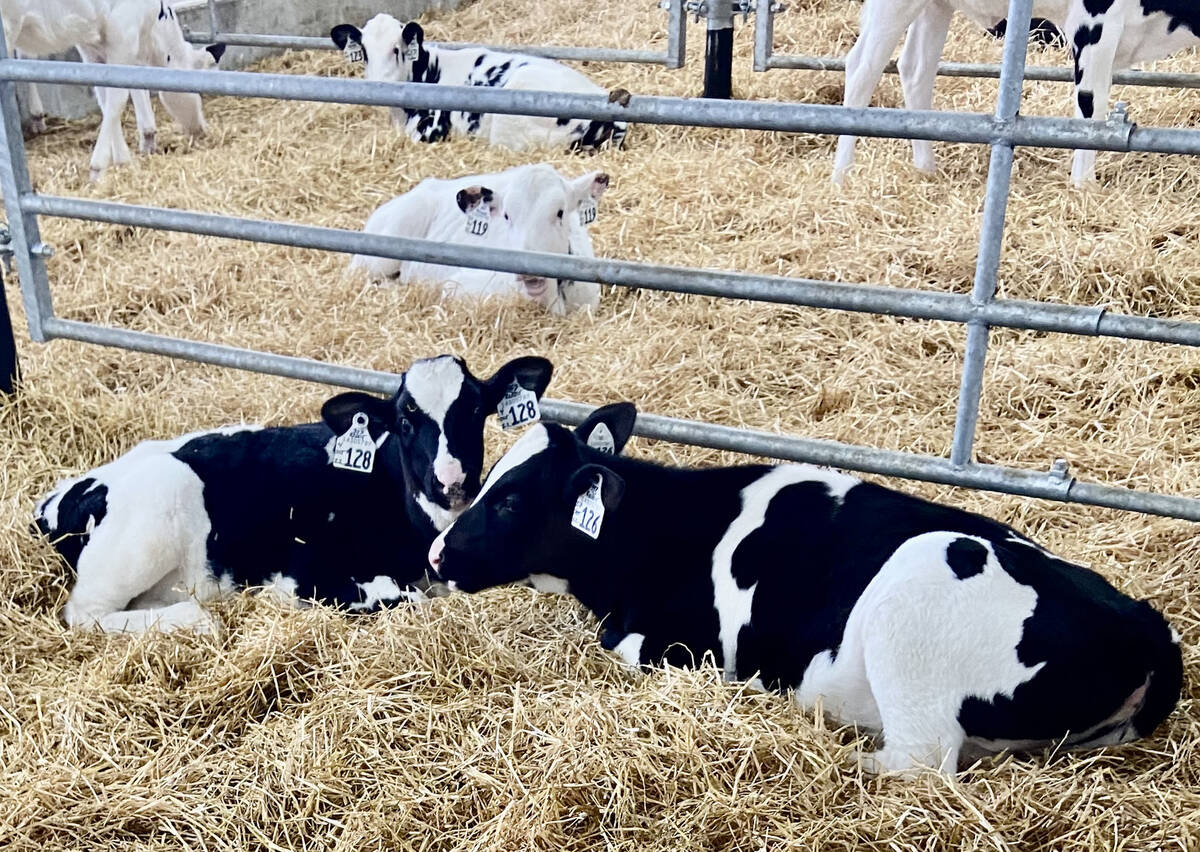
Back to the drawing board for sexed semen fertility ratings
Lactanet, the national genetic evaluation and dairy data provider, goes back to the drawing board with its sexed semen fertility rating index prototype.
Many smaller dairy farmers, especially in Ontario and Quebec, have long considered themselves “breeders” who focused on genetic improvement of their cows, in the hope that their skill will lead them to breed cows and bulls and those families will sell around the world.
About 80 per cent of the world’s top female genetics are now concentrated in the hands about 10 companies, said Michael Lohuis, vice-president of research for Semex, the largest Canadian dairy genetics company.
Those 10 include Semex, a farmer-owned co-operative, who has historically been loyal to its farmer-owner based in the purchase of bulls.
“We’ve sort of been forced into it. Some other studs started that first. We realized we couldn’t rely on the old model and we had to move quickly to invest in females,” said Lohuis, during an interview at the Royal Agricultural Winter Fair. Semex is the international marketing arm of three local Canadian genetics companies EastGen, WestGen and CIAQ. It now sells vastly more semen outside the country than in Canada.

Semex continues to have a significant presence at the Royal’s dairy shows. That’s ironic as such shows glorify the phenotypic evaluation of cows and Semex has become a global leader in selection based on the genome. However, the Royal also is a major meeting place for the global dairy genetics industry and despite the power of being able to look right into the DNA of a cows, cow people still like seeing beautiful animals.
Lohuis said there are some farms they work with to source bulls, but they have to be committed.
“We still work with partners out there who are willing to invest at that level,” said Lohuis. “It’s very rare that you find what you find free agent bulls out there in the population who are competitive. Most times its partners that have actively themselves been investing in IVF, purchasing top females themselves.”
Genetics companies caught outside of the purchase of top females are failing quickly. Koepon Holding BV, which owns Alta Genetics, announced in December it would be merging with CRI, a co-operative that markets its dairy genetics as Genex. Alta Genetics was an early purchaser of female genetics and CRI was not.
Germain Lehoux said he believes there are only two individual farms still in the breeder game in Canada, sending bulls to dairy genetics companies, Stanton Farms in Ilderton, Ont. and Westcoast Holsteins in Chilliwack, B.C. Stantons and West Coast are also two of the largest dairy farms in the country. Lehoux was part of a group of three breeders who tried to pool their resources to stay in the high-end cattle genetics game. That group, as well as others investor groups have had to accept that they can’t keep up with significant change in speed in genetic progress.
Brian Van Doormaal, chief executive officer of the Canadian Dairy Network (CDN), said that genetic progress has doubled since 2009, when genomics arrived. CDN is the data repository of Canadian genetics.
“It’s really, really tough and if you want to be a breeder targeting the AI (artificial insemination company) purchase of a bull,” said Van Doormaal. “You really have to be at the top of your game and be using the youngest genetics and using IVF. Technology has advanced so quickly and so wonderfully.”
The changes in dairy genetics all comes down to the ability to evaluate heifers and bulls earlier with higher accuracy.
“Right now we are able to deliver genetic information on those young animals with a measure of accuracy of 70 per cent. Before genomics it was only 35 to 40 per cent,” said Van Doormaal. The 35 to 40 per cent was based on parent averages.
Previous to genomics, genetic companies had to buy bulls, wait for sexual maturity, create incentives for farmers to use those young bulls, then wait nine months for gestation and then two years until a heifer calf matured, calved herself and started producing milk. Then the data would flow through dairy herd management organizations like CanWest DHI and CDN and back to the genetics companies.
Now, it is possible to biopsy an embyro and genotype it, so that the genetic information is known before birth. Embryos can be harvested from virgin heifers and fertilized via IVF – where sperm is introduced to embryos in a petri dish — so that many of her offspring can be born before the dam is much into her milking career. The embryo harvesting and IVF process is not new, but genomics lets genetics companies know the potential of a male or female with 70 per cent reliability much earlier.
The market appears to have accepted 70 per cent reliability as good enough if it means earlier access to higher genetic merit bulls. At one time young sires made up 20 to 30 per cent of units of semen sold, with progeny-proven sires 70 per cent. The numbers have flipped, with about 70 per cent of sales genomic young bulls and 30 per cent progeny-proven bulls.
Genetic companies are testing many bulls with genomics, but few end up in their barns to actually supply semen to cows. That’s meant the closure of bull barns across the country.
Constant reporting of genomic data
The Canadian Dairy Network once created genetic evaluations every three months for the industry, eagerly anticipated as the next ‘proof round’. Now, with decisions on bulls and bull mothers being made almost daily, CDN delivers those reports weekly.
That increase in speed has built more intense competition among genetics companies, said Lohuis. As other companies bought the best females, Semex had to go along.
“One of the directives from our board is to make sure we provide access to the best genetics in the world and we give preferred access to that semen to our own members,” said Lohuis. To fulfill that goal meant buying and controlling females through its Progenesis company. The elite females undergo IVF at Semex’s Bovitec facility in Quebec and then they and the recipients carrying their embryos are calved at one dairy farm that specializes in providing the best care to those heifers, cows and calves. They have become calf neonatal specialists. When each animal is worth significantly more money than an average calf, more care is needed not to lose the investment.
Driving data faster
The genomic revolution in dairy cattle is a data revolution. Canadian dairy farmers have benefitted from big, aggregated data available from its dairy herd management organizations and CDN, but genomics have driven much more speed into the process. That led CDN, CanWest DHI and its Quebec and Maritimes counterpart Valacta to announce a partnership which will create a single market presence and board of directors, in order to be able to deliver on that data and its potential for helping farmers in a quick and more integrated fashion. The just-announced partnership will be in place in October, 2018.
Genomics have also meant that there’s the potential to give farmers the power to select with more accuracy on traits that couldn’t previously be measured reliably.
Van Doormaal points to health traits: correlations between disease and genetics that have low heritability.
“With genomics we can boost that reliability. Now people can select for traits that are important to them with more reliability.”
The Canadian dairy industry and universities are part of a global consortium, called the Efficient Dairy Genome Project that is looking at creating an index so that farmers can select for feed efficiency.
“We would never think of doing that without genomics,” said Van Doormaal.
Dairy farmers have dabbled in genomic testing of their females, but few have moved to blanket testing which costs about $45. About 10 per cent of the heifer dairy calves born in a years are genomically tested. Farmers are continuing to try to figure out the value of that $45 investment. Holstein Canada and CDN are planning to release a calculator next fall that will allow farmers to assess the economic value of genotyping.
Choosing male or female at conception
Sexed semen has also played a role in the changes in the genetics market, said Lohuis. It’s meant more females in the global marketplace, although ideally, farmers would use it on their best females and breed the others to unsexed, less expensive semen, or a beef bull, or implant them with embryos.
Sexed semen, along with greater calf care, has meant there’s a much smaller market for Canadian commercial dairy cows in the United States, where 100,000 per year used to find a home. The market never recovered after the BSE case in 2003 closed the border and American farmers had to find another source of dairy cows. They found it on their own farms, with better calf care and eventually using sexed semen.
Sexed semen is also very popular in markets around the world, said Michael Hall, executive director of the Canadian Livestock Genetics Association, which helps market Canadian genetics around the world.
If a dairy farm in Asia has purchased an embryo from Canadian genetics, it wants that heifer calf to have another female, so the minimally greater investment in sexed semen makes sense to them, he said.
International buyers are turning increasingly to genomic young sires, like the North American market, said Hall, and are avoiding creating their own genetic proving system altogether.
Despite the change in genomics, “there’s still a market for good commercial, solid, strong milk cows we are known for,” he said.
There just isn’t as much of a market for highly classified, strong genetic merit cows, unless they test very high for genomics. The definition of a commercial cow has expanded.
A declining milk price in Canada – the tradeoff for quota increases with the creation of a new class of milk that is replacing imports – is also putting pressure on the price of elite cows, although commercial cow price remains strong.
At the Lehoux farm, as a long-established top-genetics herd, they continue to have local and international buyers for their females, with 30 per cent of their income continuing to come from genetic sales. But the market is changing. Germain, a former president of the Holstein Canada breed association, said they are concentrating more on high milk production, with high components, and expect to be into a new barn in the next five years. Their story is common, with well-managed farms who once made a significant income from the genetics, now competing hard in the milk market, many of them with new barns meaning greater milk production from more cows.
“It’s a brave new world in dairy genetics,” said Semex’s Lohuis.




